Visiting North Philadelphia’s Church of the Advocate
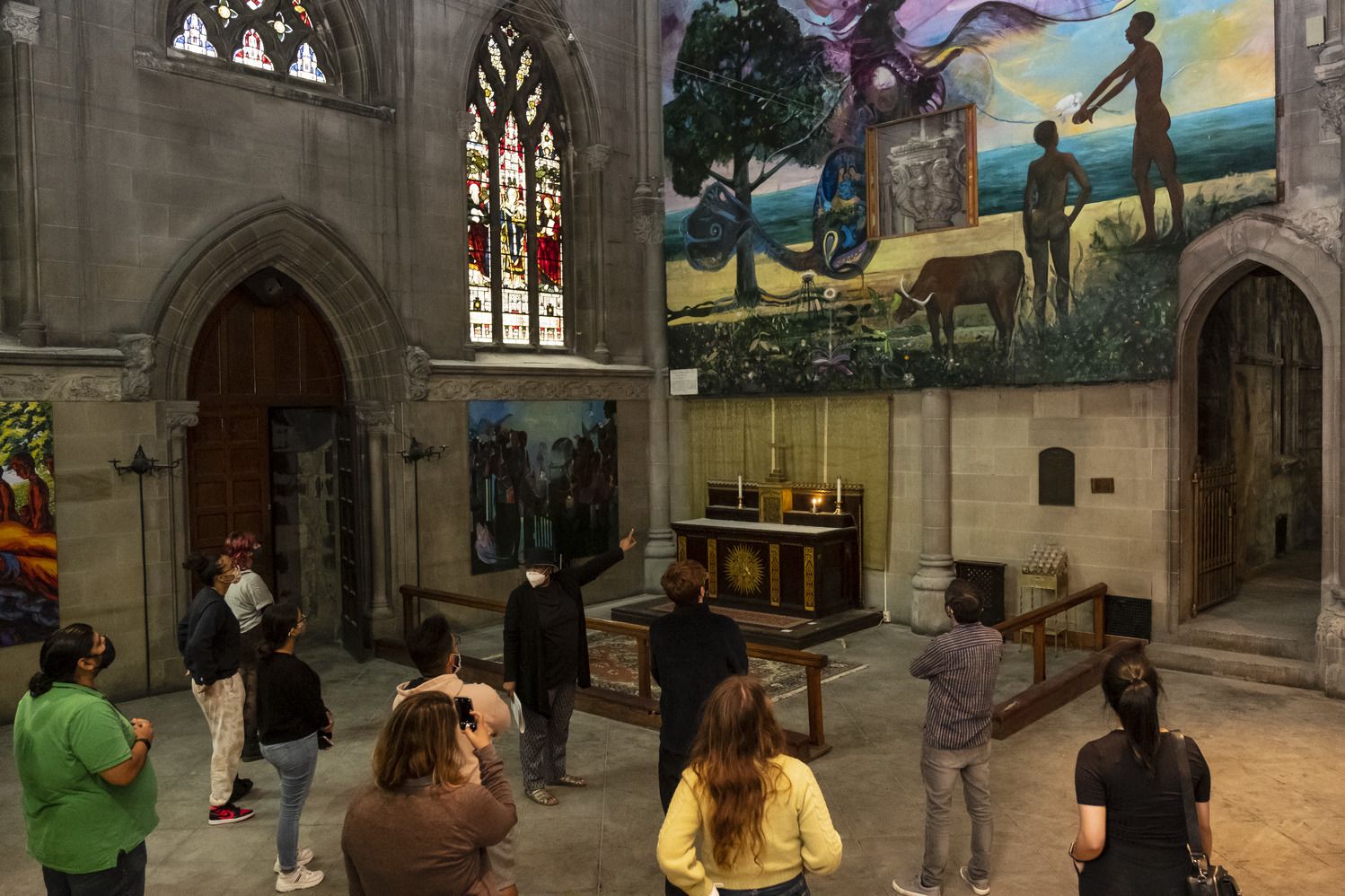
When you walk into the George W. South Memorial Church of the Advocate, it feels like you’re going back in time. That’s due in part to its Gothic Revival architectural style that employs stained-glass windows, flying buttresses, tall spires and quadripartite vaults.
Located at 18th and Diamond streets, it is one of America’s most historic churches—listed as a National Historic Landmark by the National Parks Service. And it’s the only church of its style to remain so close to Temple’s Main Campus.
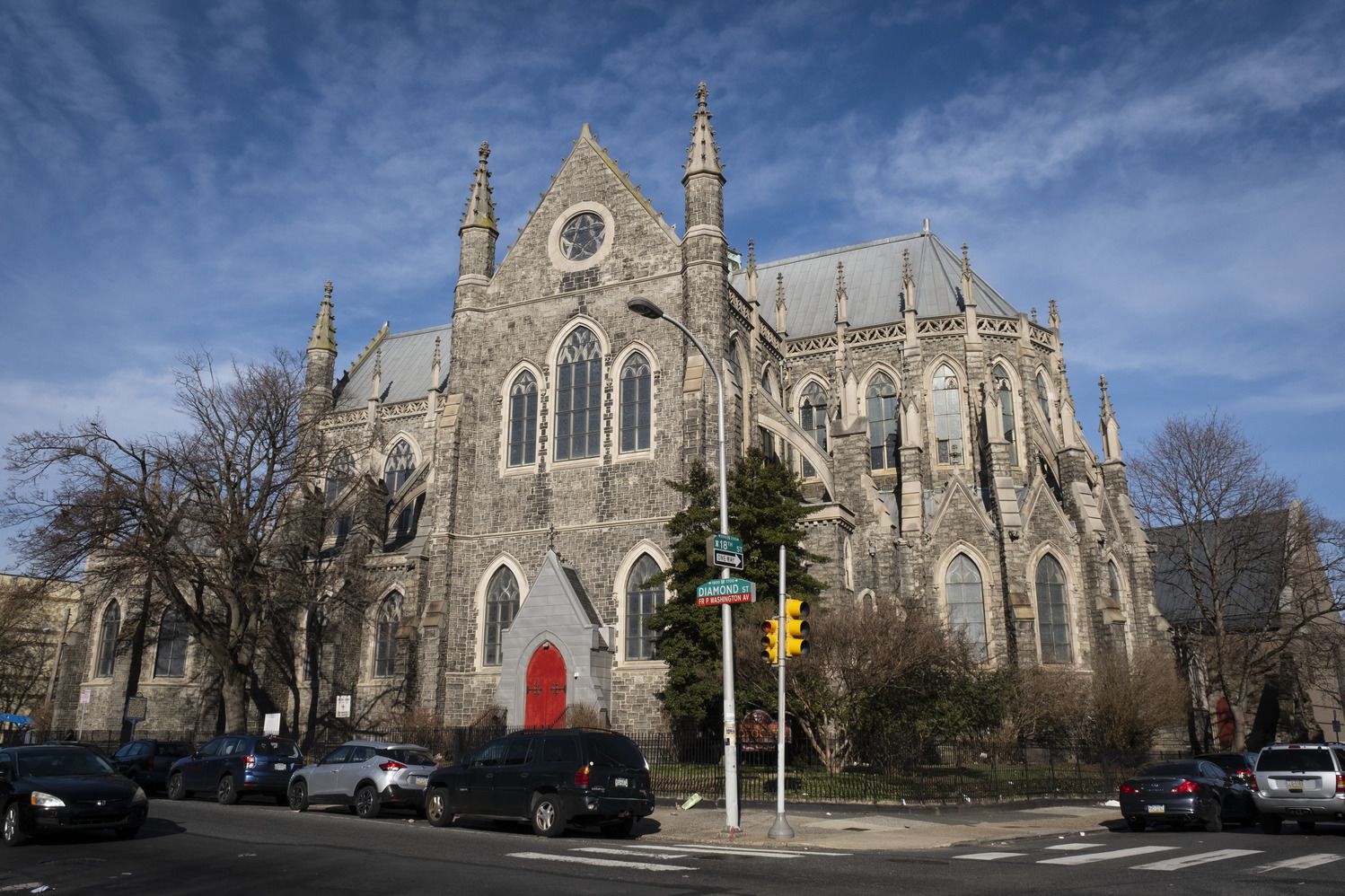
The Church of Advocate is located at 18th and Diamond streets in North Philadelphia. (Photo by Joseph V. Labolito)
The Church of Advocate is located at 18th and Diamond streets in North Philadelphia. (Photo by Joseph V. Labolito)
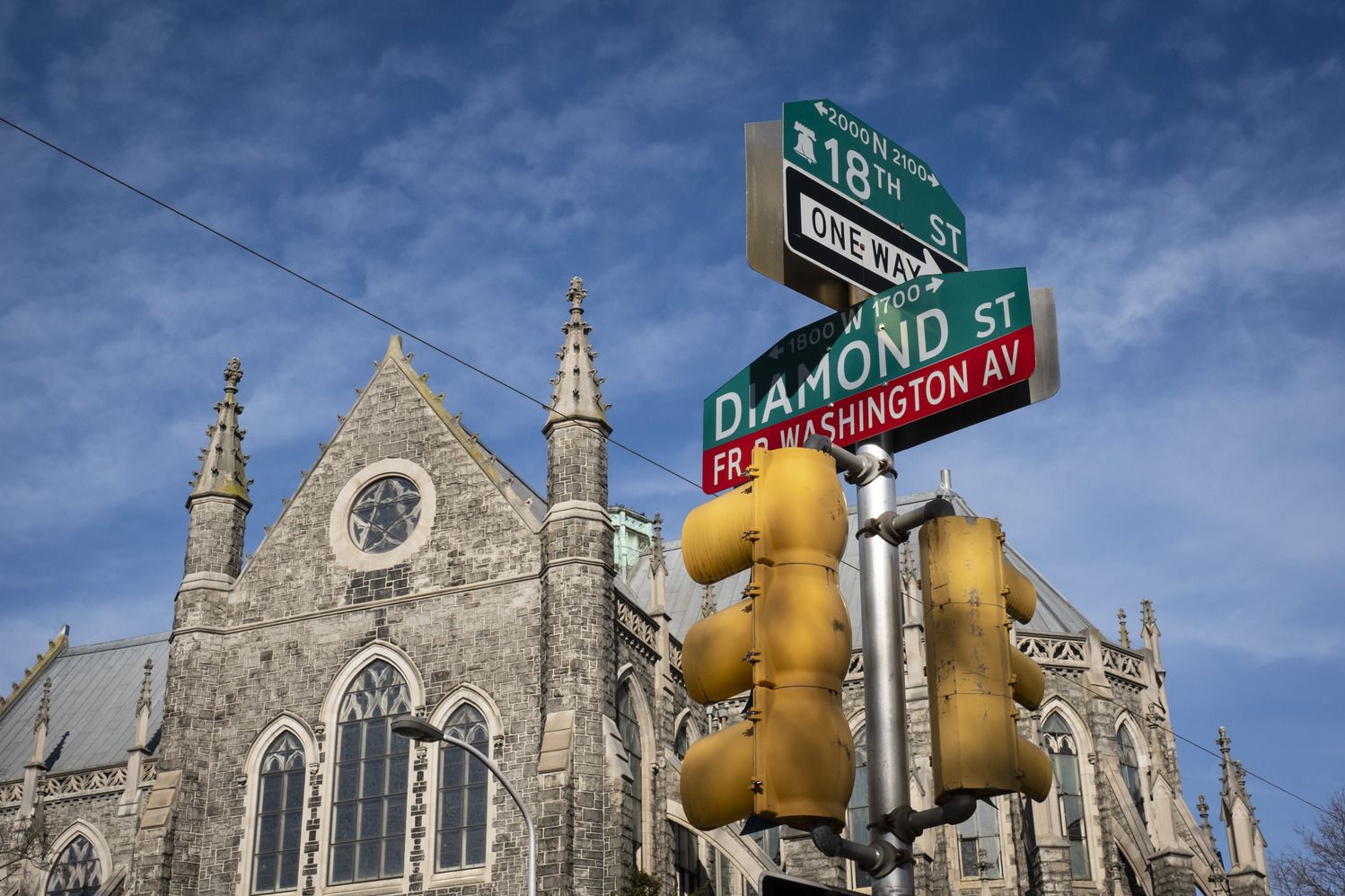
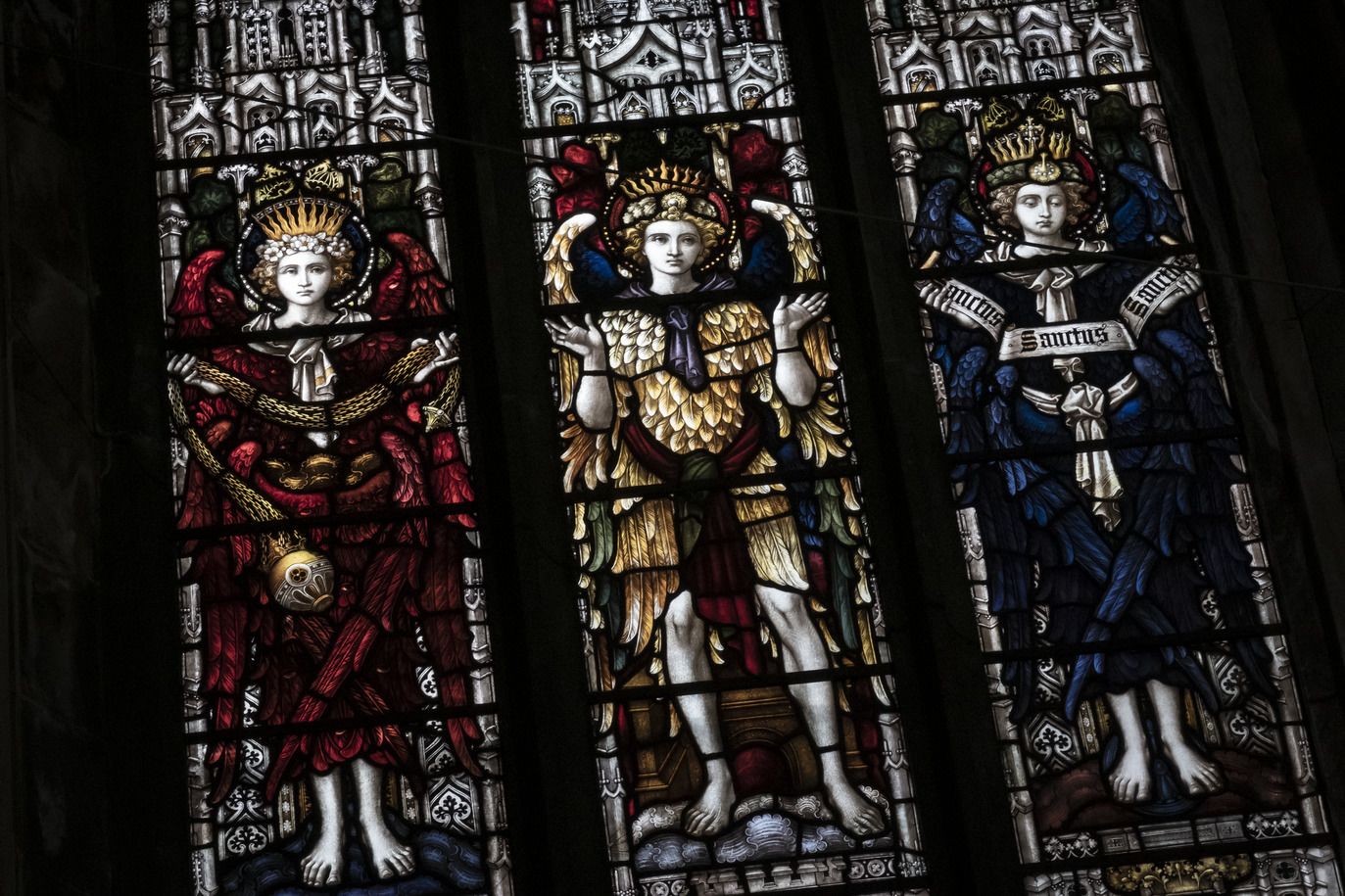
Tyler Ray, Class of 2022, takes tourists by appointment on a journey through the Church of the Advocate, relating how the structure was built and the roles it played in the civil rights and women’s rights movements—including the Black Panther events it hosted. And he describes for visitors the 14 murals that tell stories from the lived experiences of African Americans.
“This church is truly a step away from North Philadelphia, it is like walking into medieval France,” said Ray. “Even if you are not involved with art history, many social events have happened here, so no matter where your interests lie, the Advocate has something for you."
Learn more about what motivates Ray to use his education to help preserve his North Philadelphia neighborhood starting with one of its greatest gems, the Church of the Advocate.
“Every time I come to visit the Church of the Advocate, I always discover something new.” —Tyler Ray
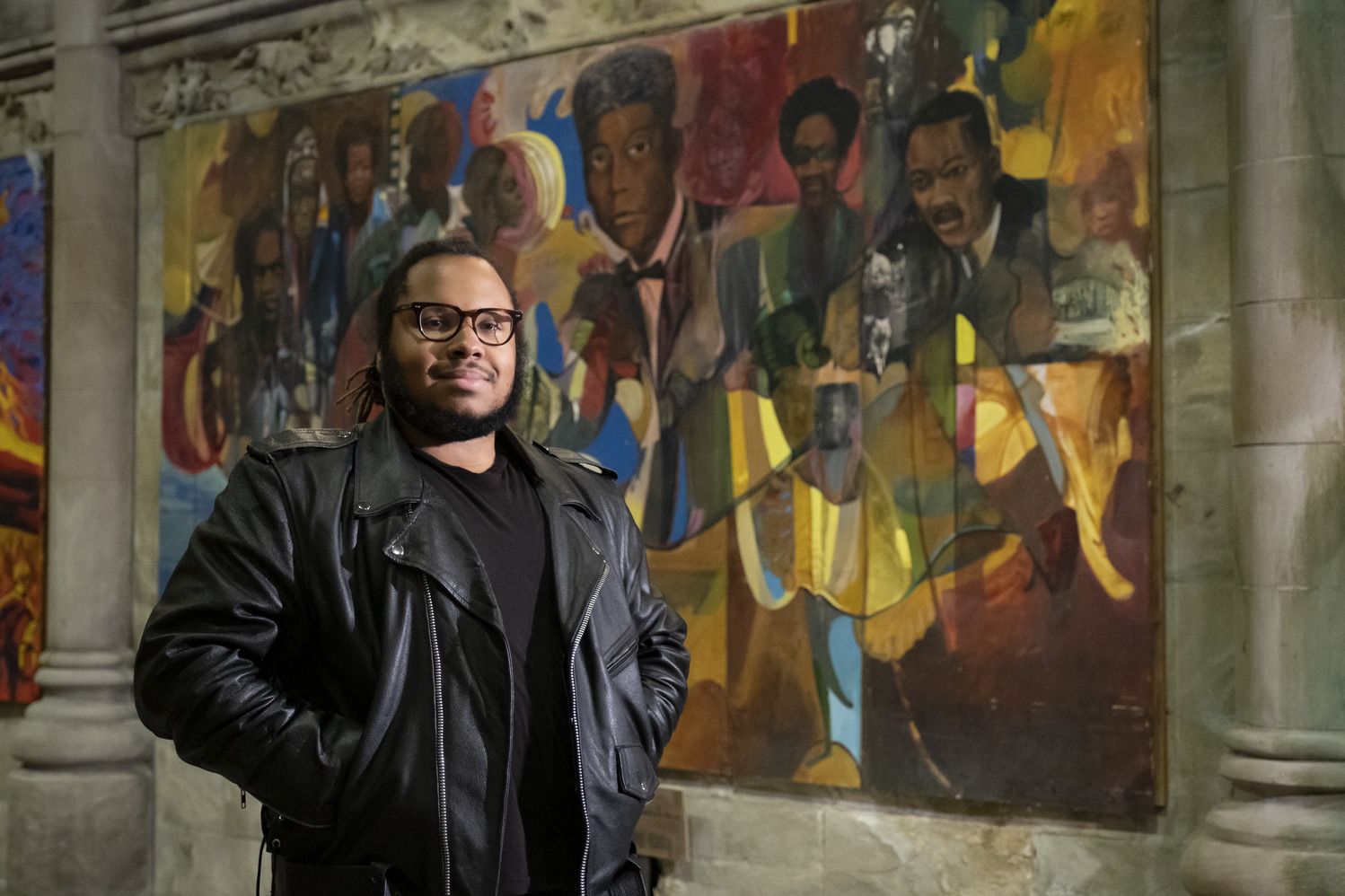
The inception
The Church of the Advocate was built by Charles M. Burns as a memorial to George W. South, a civic leader and prominent Philadelphia businessman whose clients included President Andrew Jackson, the seventh U.S. president. It is a complex of buildings, including a chapel, parish house, curacy and rectory.
“Before South died he wanted the church to be established in his name and dedicated for religious philanthropy, volunteer services and helping immigrants who moved to the U.S.,” said Ray.
According to Ray, at the time the church was built, during the early 1900s, North Philadelphia was a predominantly German and Jewish working class neighborhood. The neighborhood later became home to many African Americans during the ’40s and ’50s.
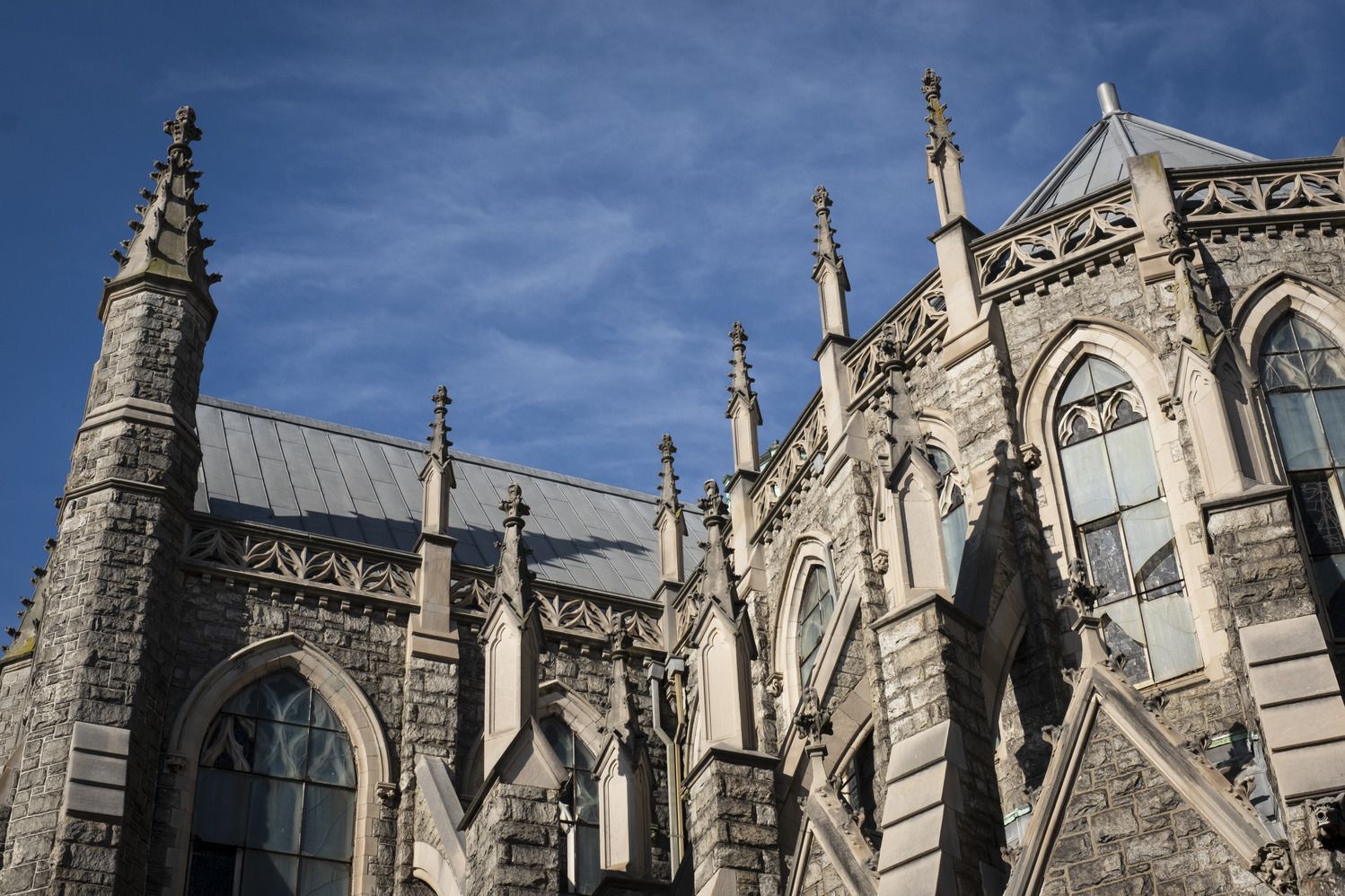
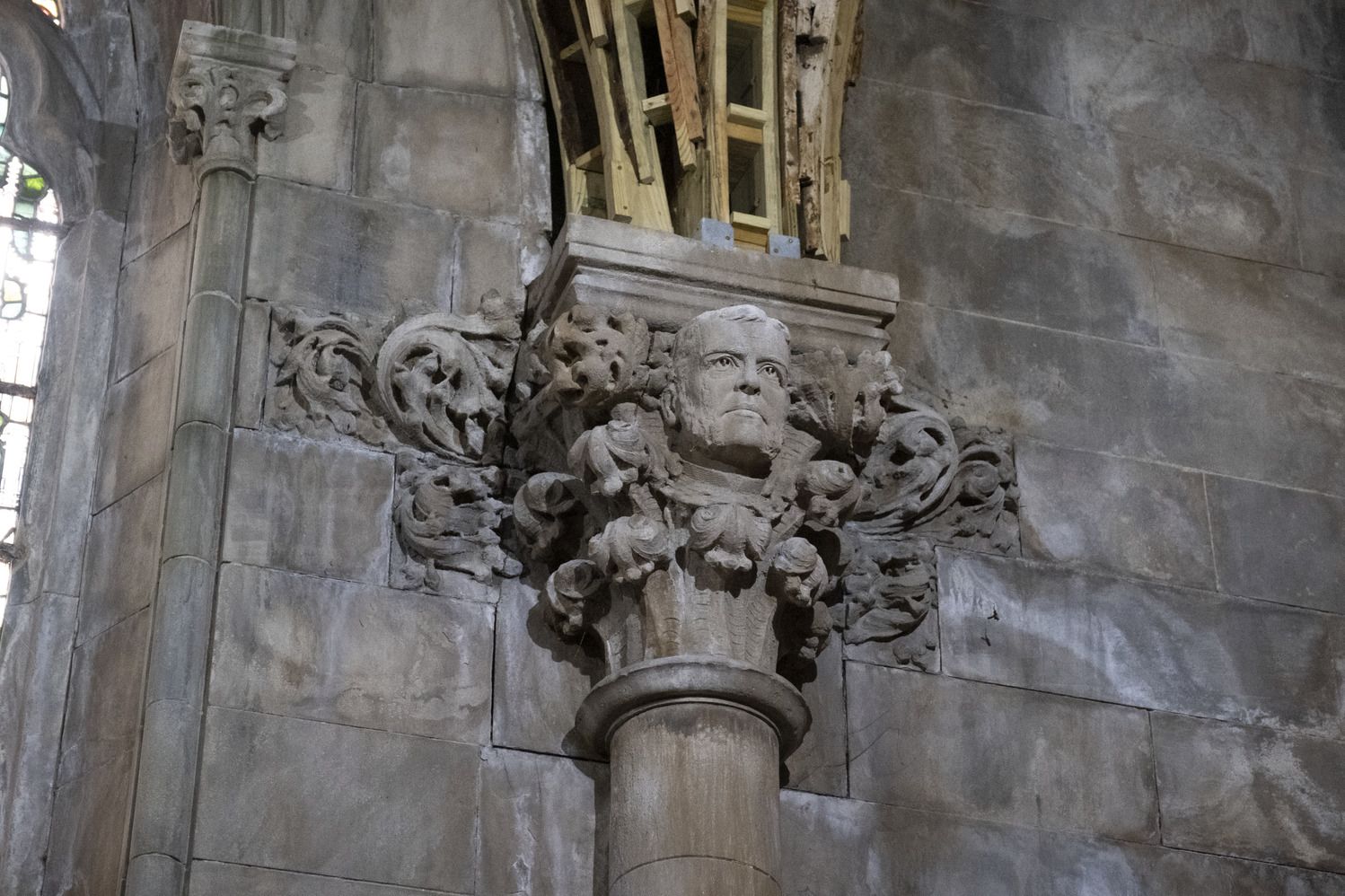
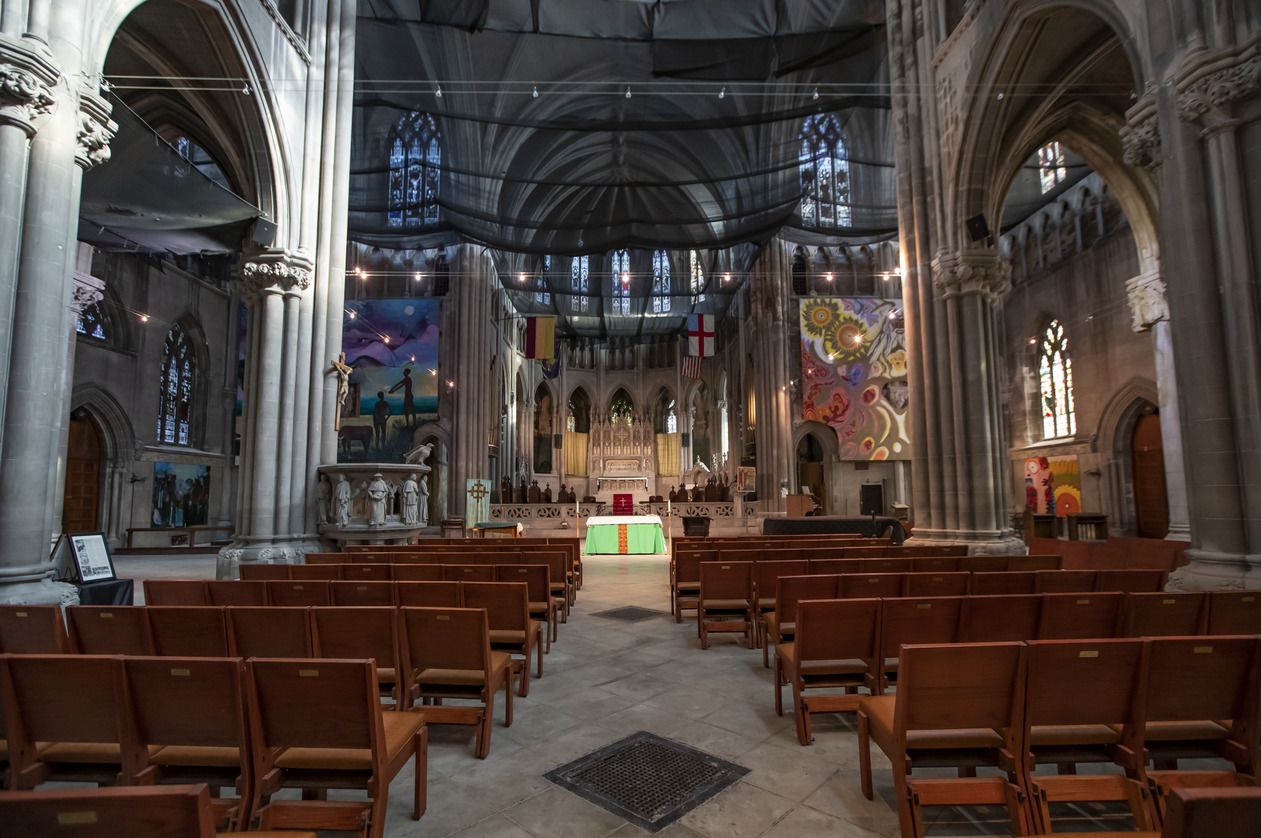
The first Episcopal church to ordain women
Playing a key role in the fight for women’s rights, the Church of the Advocate is known for being the first Episcopal church in the world to ordain women.
Barbara Harris, a Black woman, was the chief ordained of the first 11 women, a crucifer and the first woman elected as a bishop in the Anglican Communion in 1988.
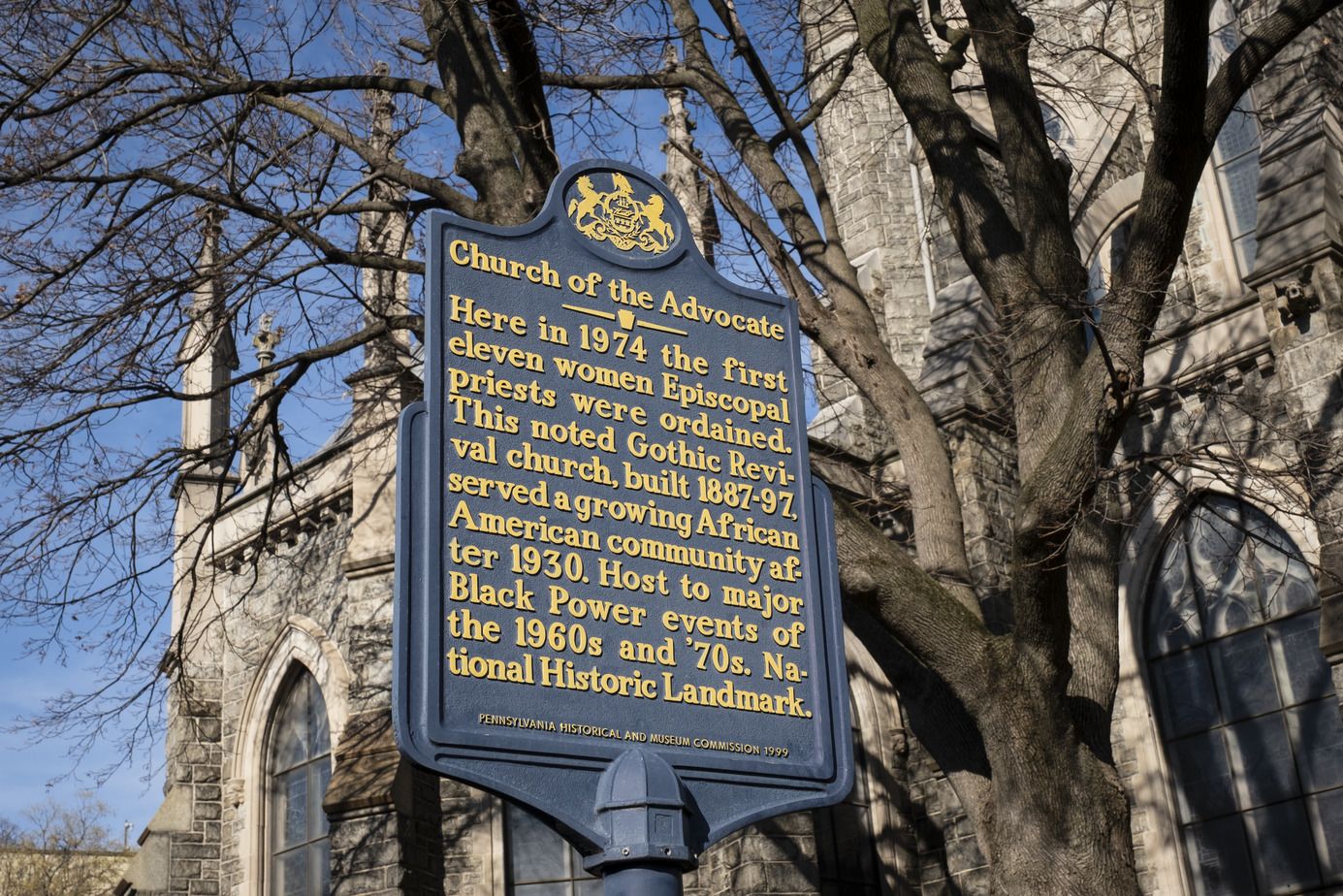
In 1974 the first 11 women Episcopal priests were ordained at the Church of the Advocate. They are known as the “Philadelphia Eleven.” (Photo by Joseph V. Labolito)
In 1974 the first 11 women Episcopal priests were ordained at the Church of the Advocate. They are known as the “Philadelphia Eleven.” (Photo by Joseph V. Labolito)
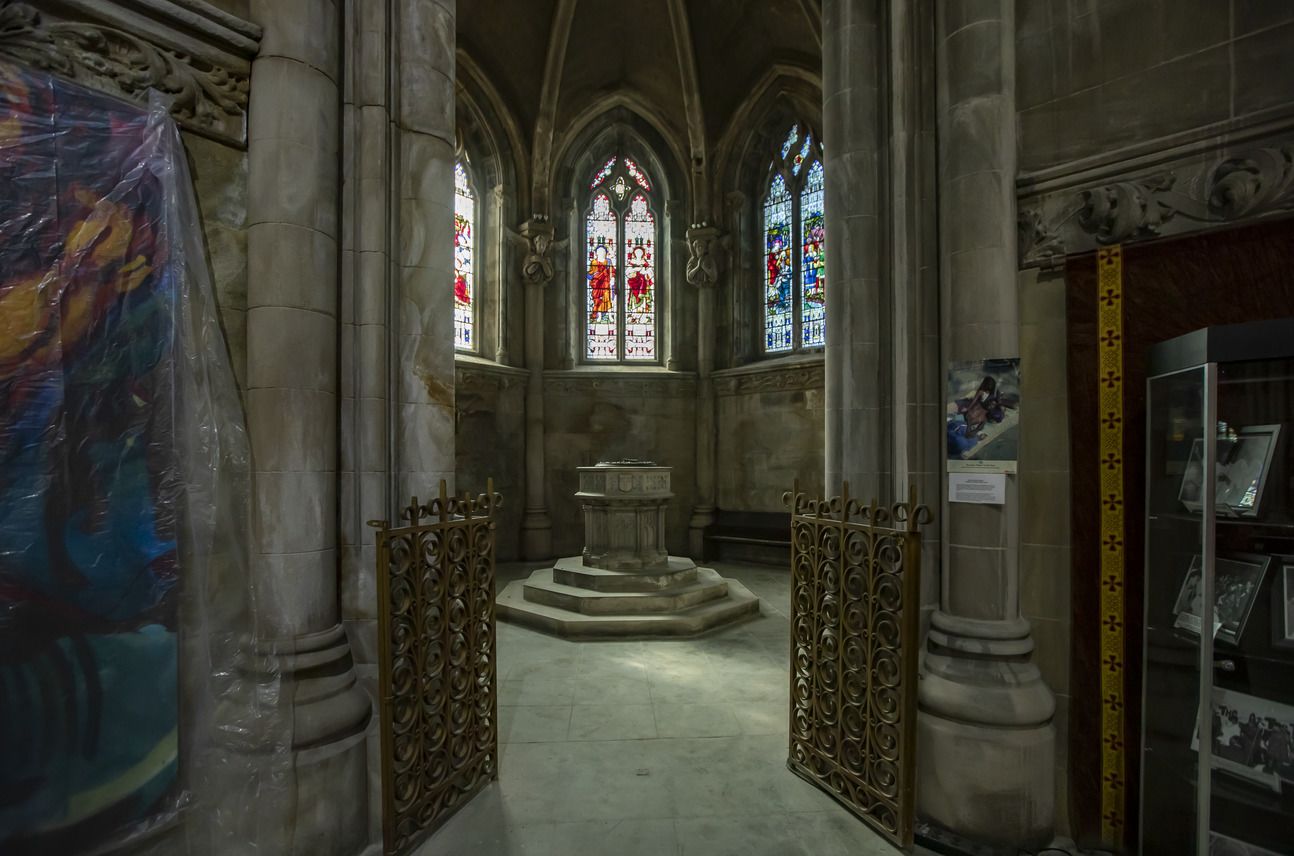
The 14 murals
During the civil rights movement in the 1960s, Black groups held rallies and conventions at the Church of the Advocate in support of civil rights to voice concerns about the cultural bias of the church.
The lack of Black representation at the church inspired Reverend Paul Washington, a rector of the Church of the Advocate between 1962 and 1987, to commission two Philadelphia artists, Richard Watson and Walter Edmonds, to paint 14 large murals that would illustrate the history of the Black people in America, including slavery, emancipation and scenes from the civil rights movement. Each mural is also based on a passage from the Bible.
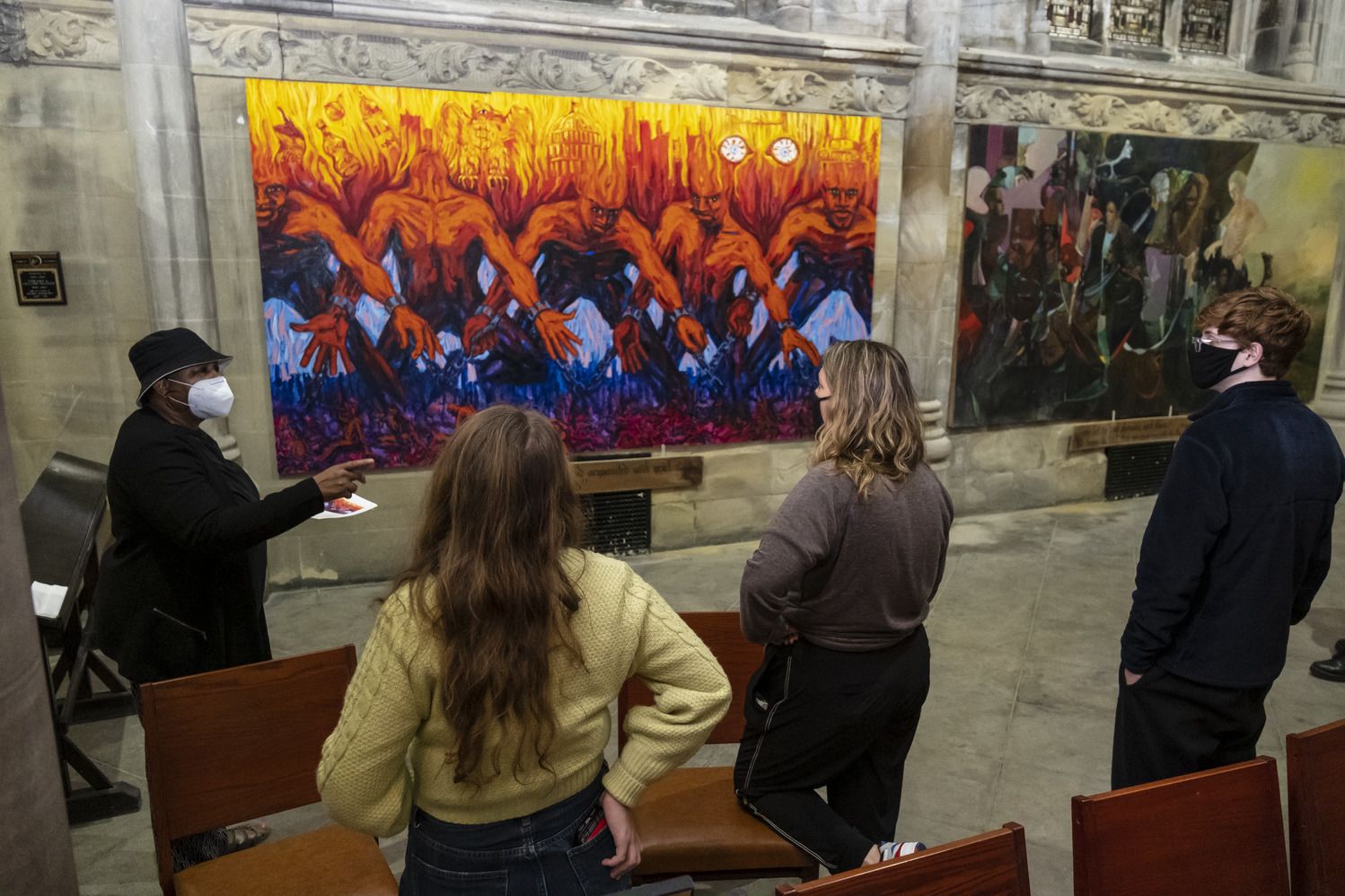
Rev. Washington selected Bible passages that would guide the artists as they designed each panel. The passages were placed beneath the corresponding paintings. (Photo by Joseph V. Labolito)
Rev. Washington selected Bible passages that would guide the artists as they designed each panel. The passages were placed beneath the corresponding paintings. (Photo by Joseph V. Labolito)
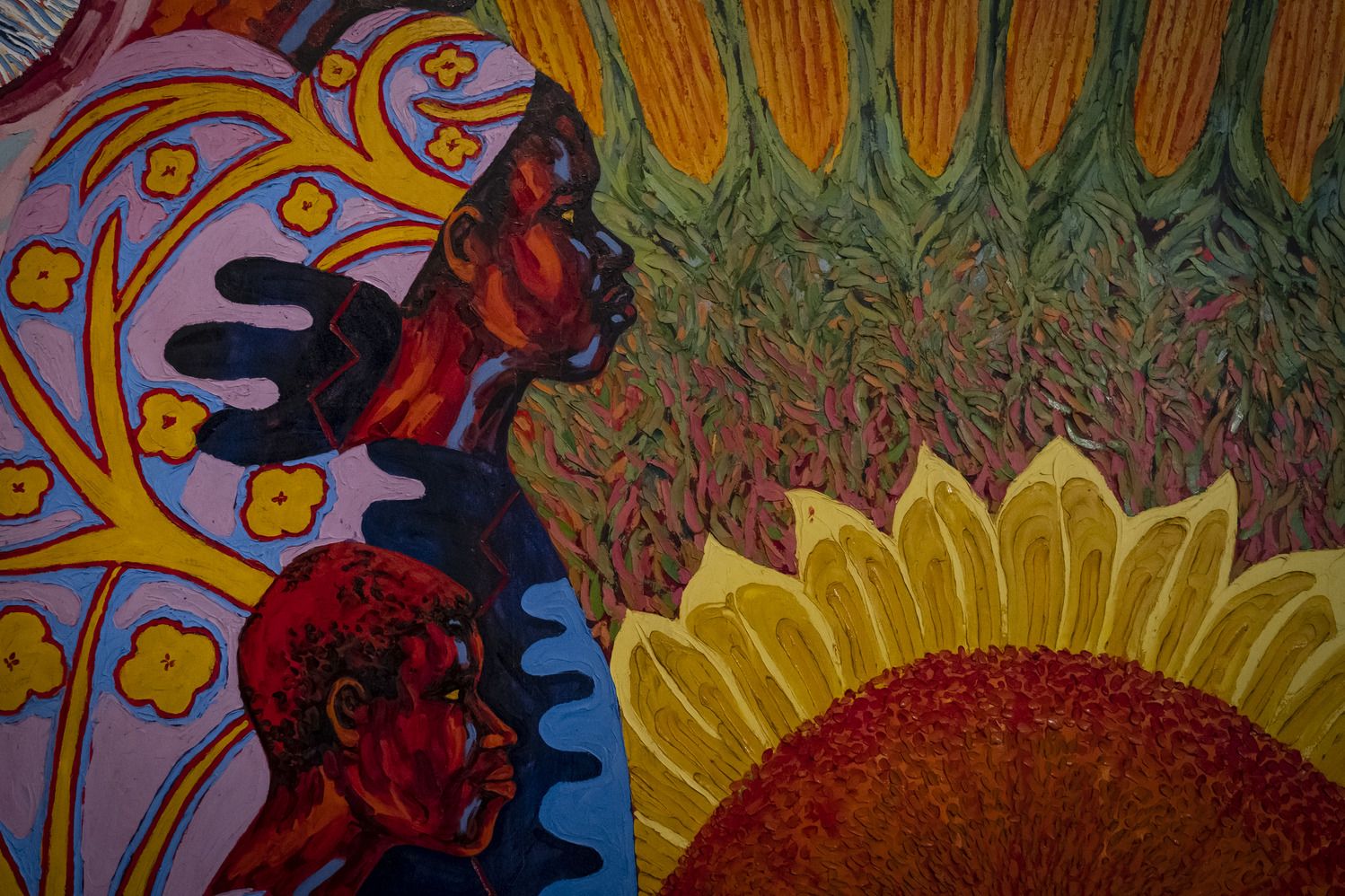
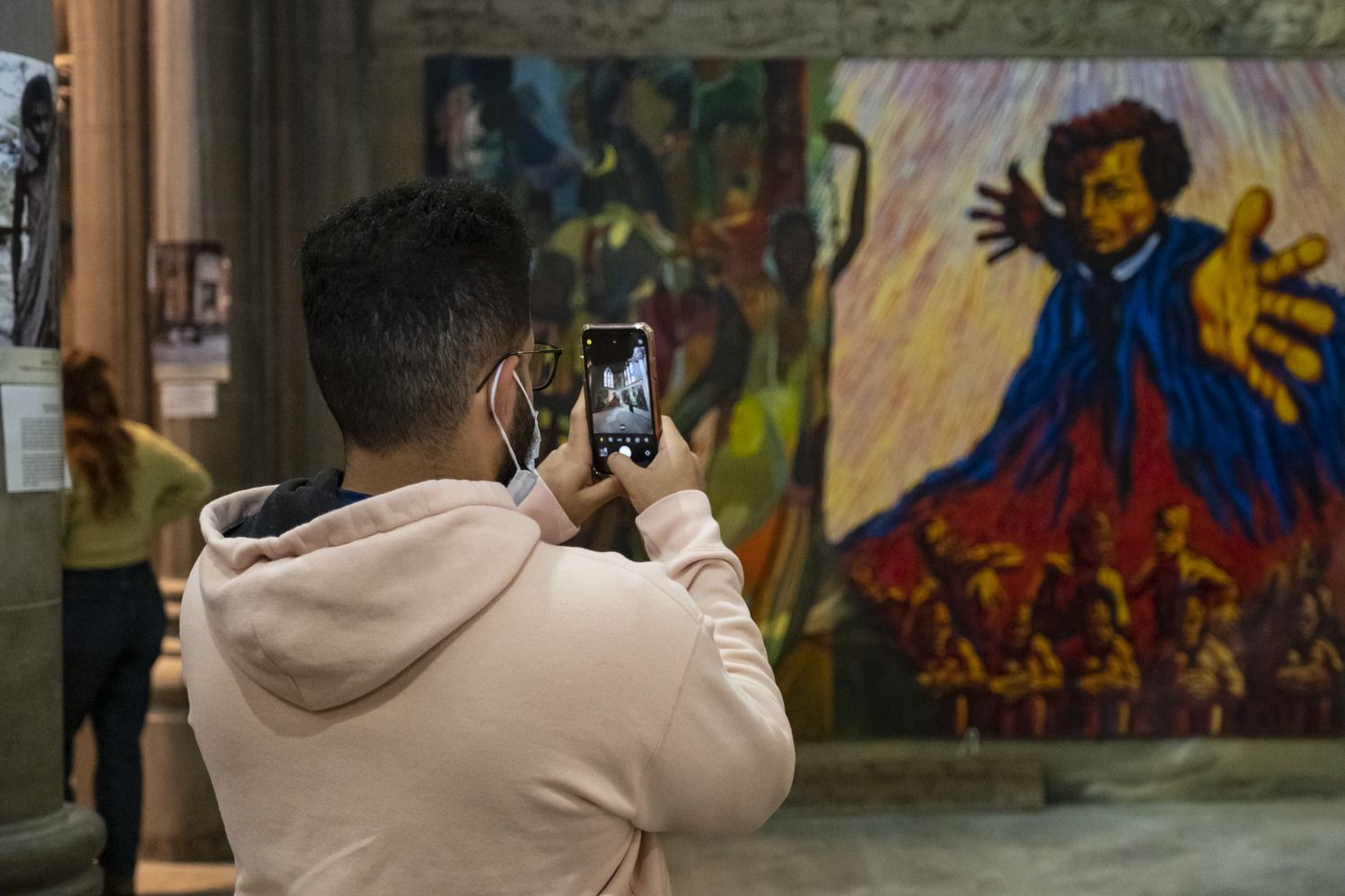
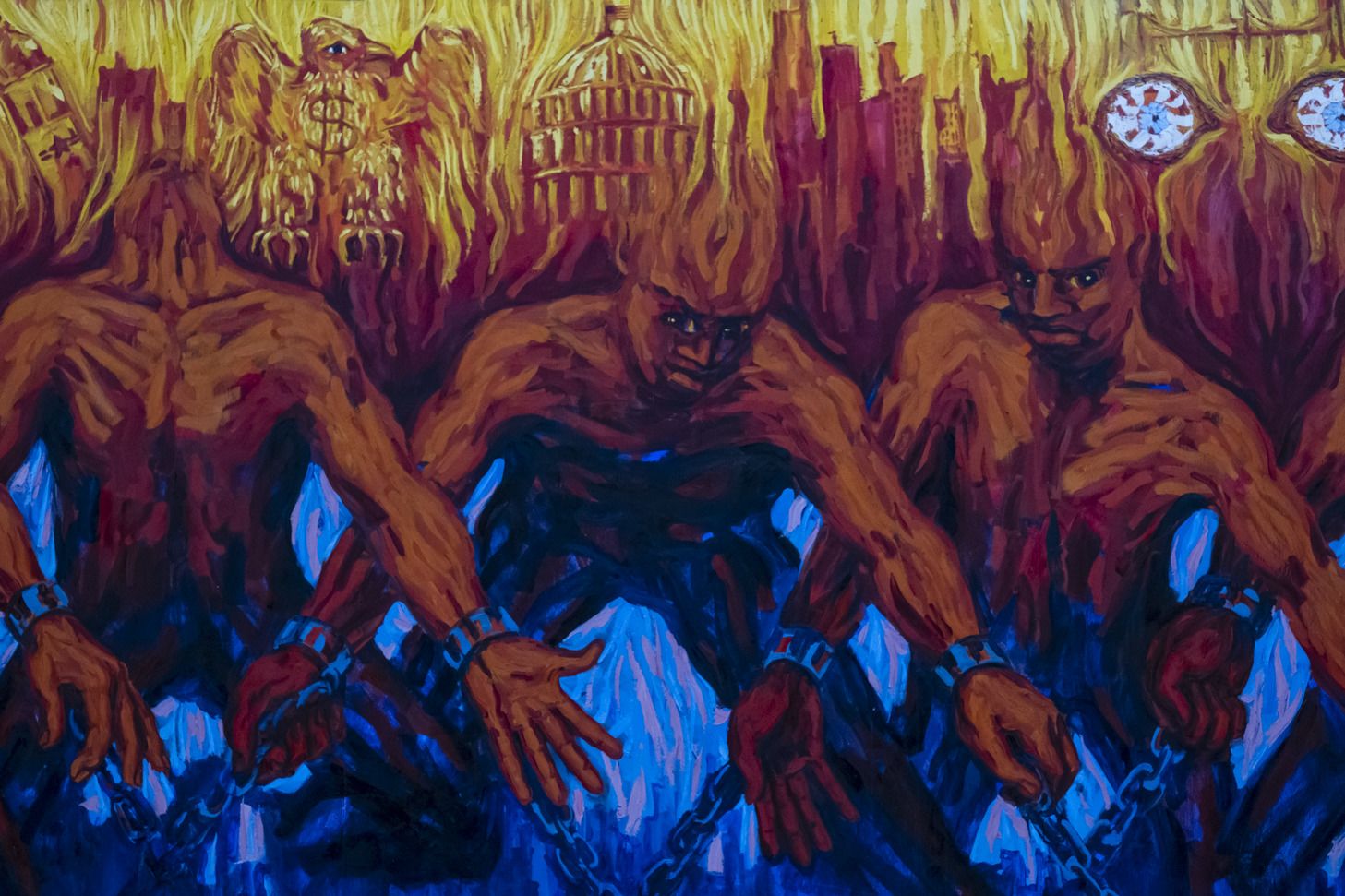
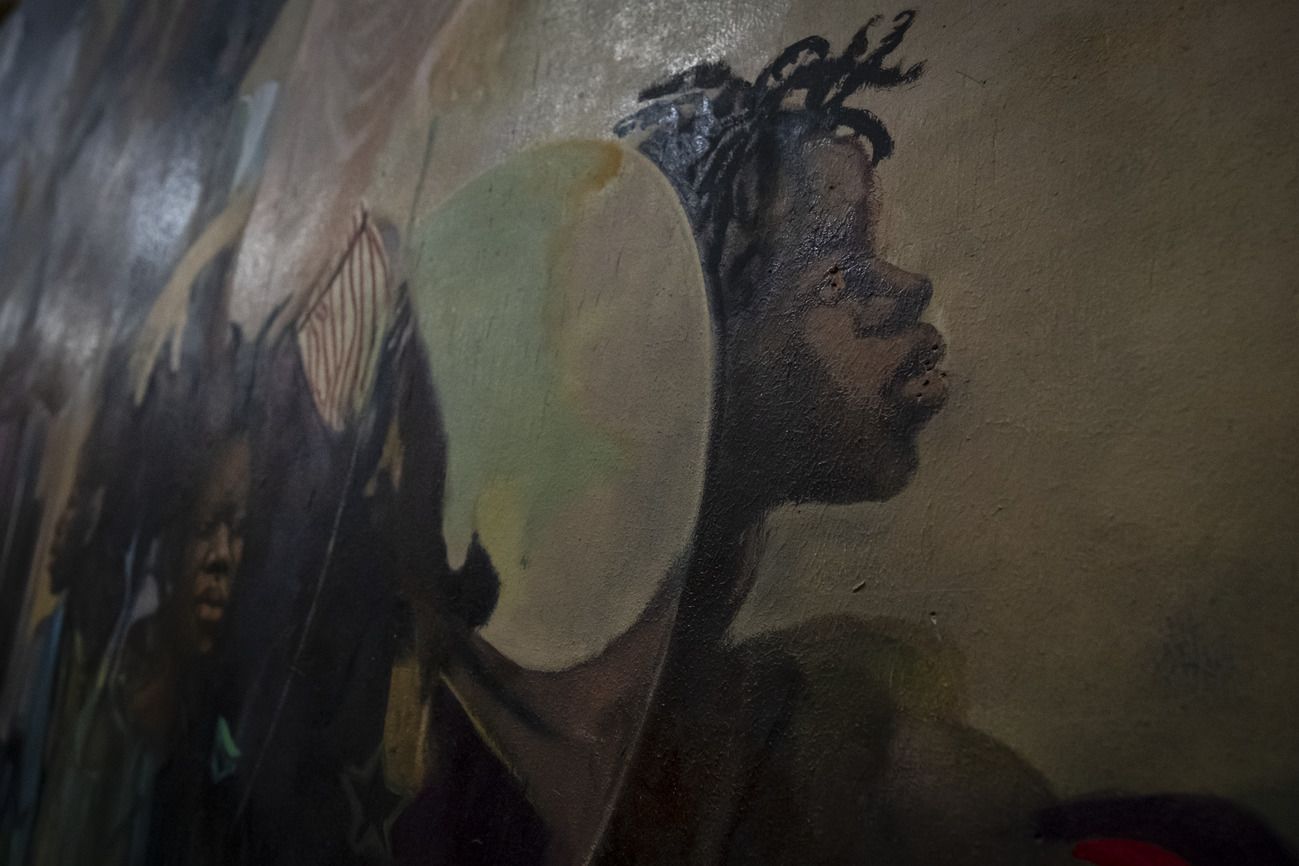
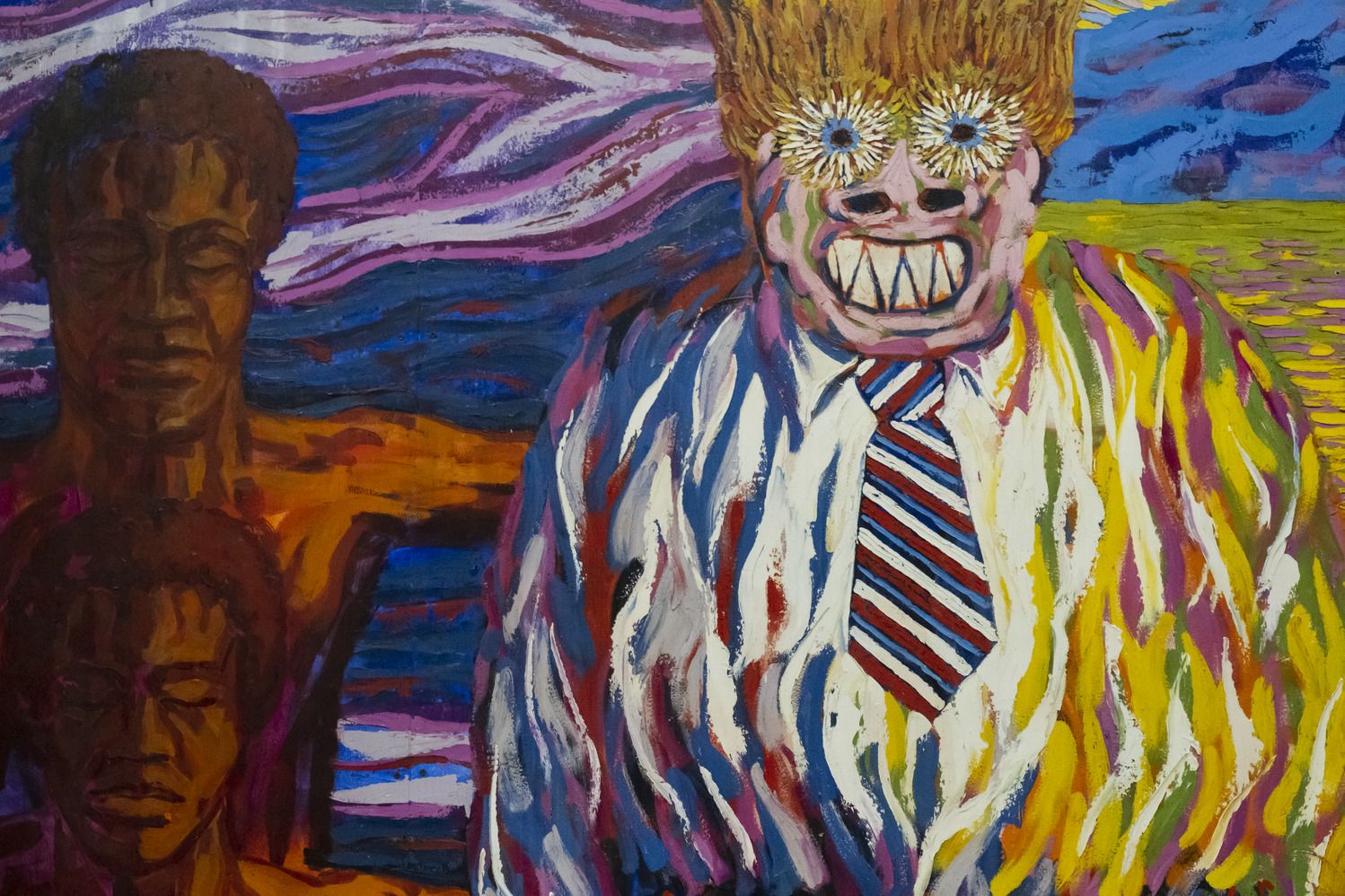
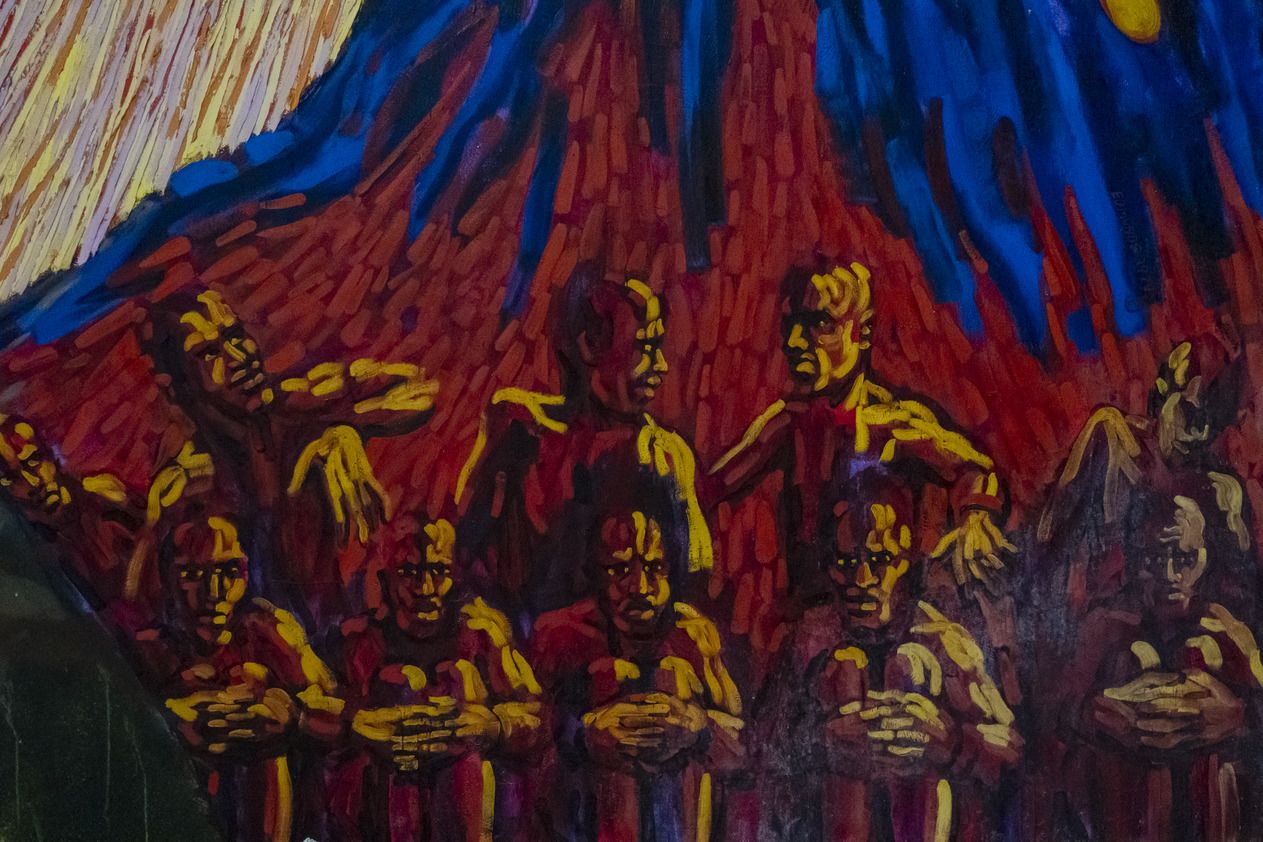
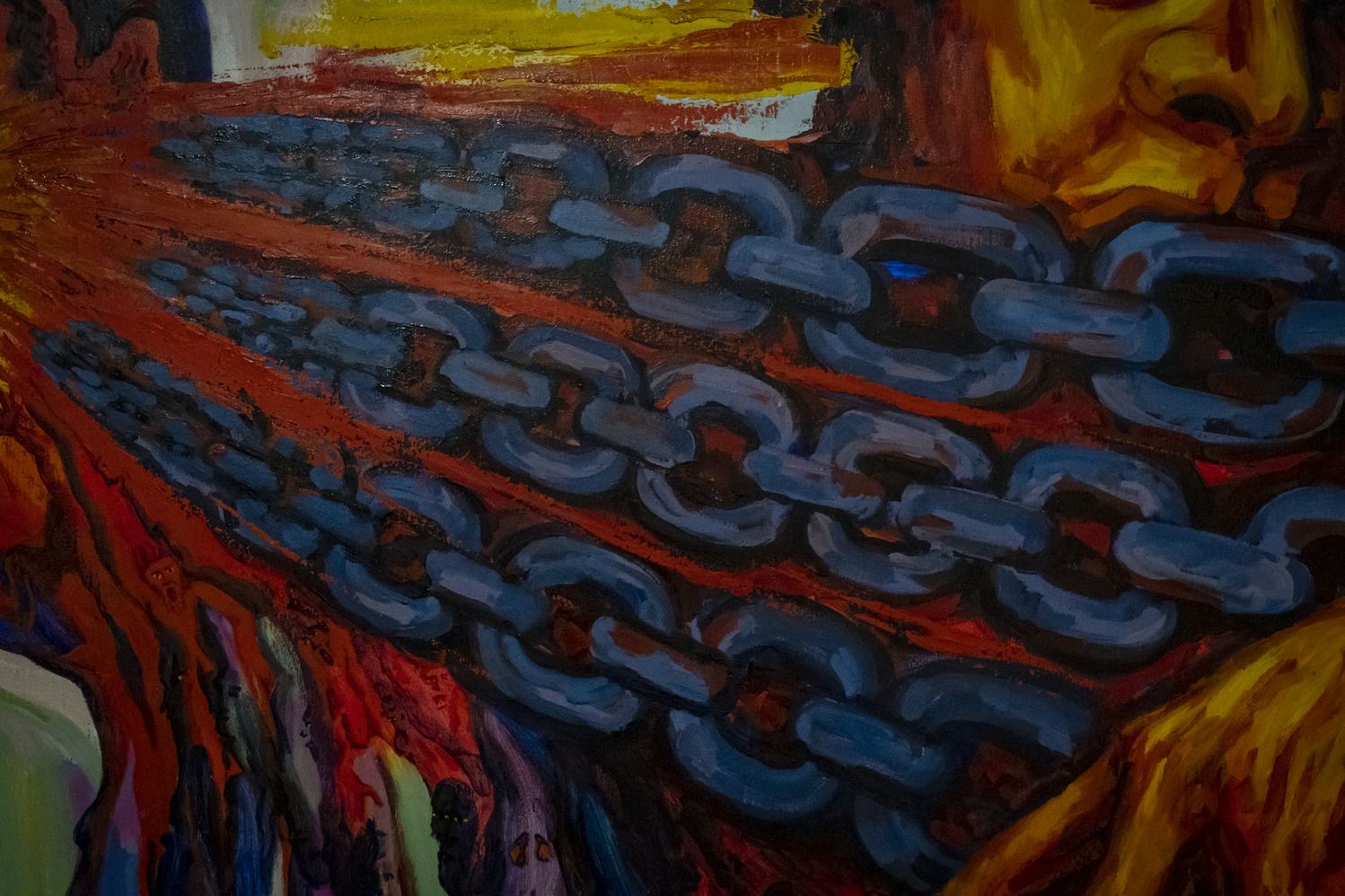
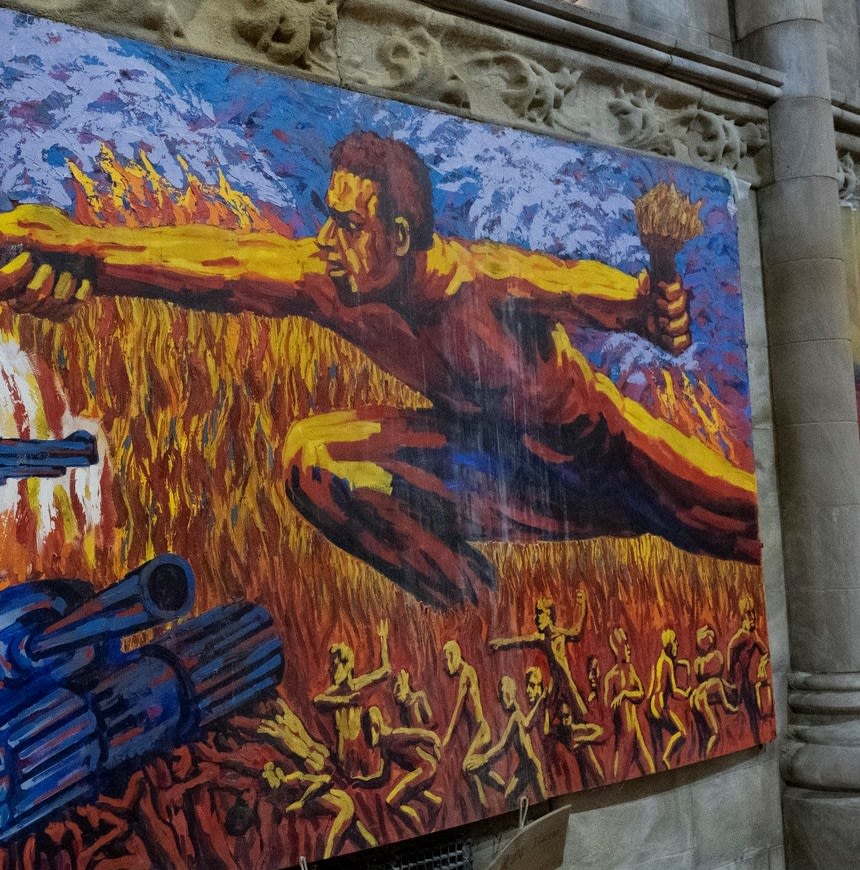










Advocating for civil rights
Through the ’60s and ’70s, the church was the site of nationally significant events of the civil rights movement. The third annual National Conference on Black Power was held at the church in 1968. Then, in 1970, the Black Panthers hosted the Revolutionary People’s Constitutional Convention to draft a new version of the U.S. Constitution in an effort to unify factions of the radical left in America.
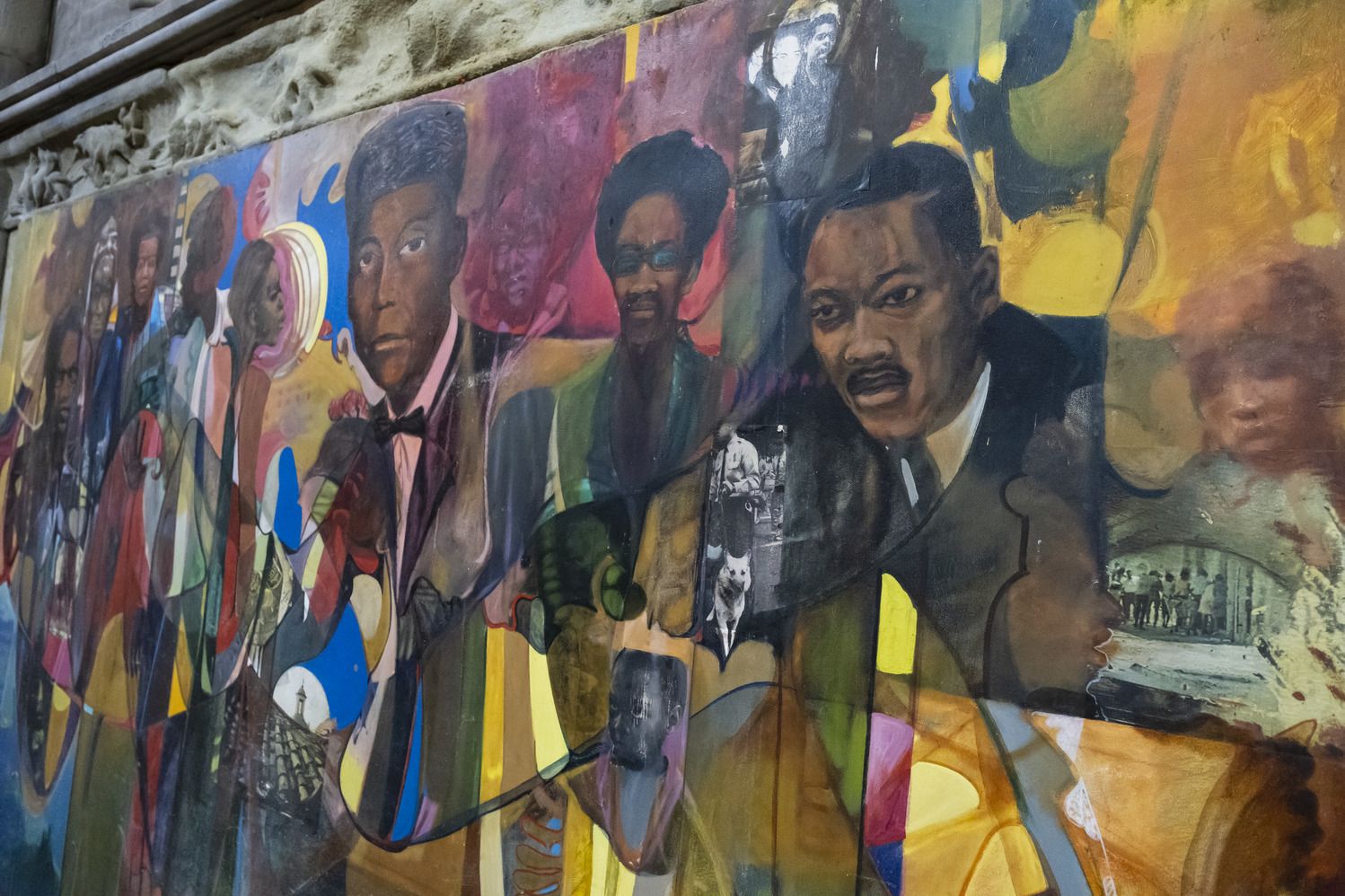
A 1975 mural by Richard Watson at the Church of Advocate portrays Black civil rights leaders, including Martin Luther King Jr., Elijah Mohammed, Malcolm X, Sojourner Truth, Shirley Chisholm, H. Rap Brown and Stokely Carmichael. (Photo by Joseph V. Labolito)
From left to right: Elijah Muhammad, H. Rap Brown and Martin Luther King Jr. are pictured in this mural painting by Richard Watson. (Photo by Joseph V. Labolito)
Malcolm X, Sojourner Truth and Shirley Chisholm are pictured in this mural painting by Richard Watson. (Photo by Joseph V. Labolito)
Those touring the site may also view Rev. Washington’s office, where civil rights leaders met for Black Panthers meetings.
“Names like Dr. Martin Luther King Jr., Malcolm X, Stokely Carmichael, Angela Davis, Sonia Sanchez and other leaders that you think of from the civil rights movement were once in Father Washington’s office at the church throughout the ’60s and ’70s,” said Ray.
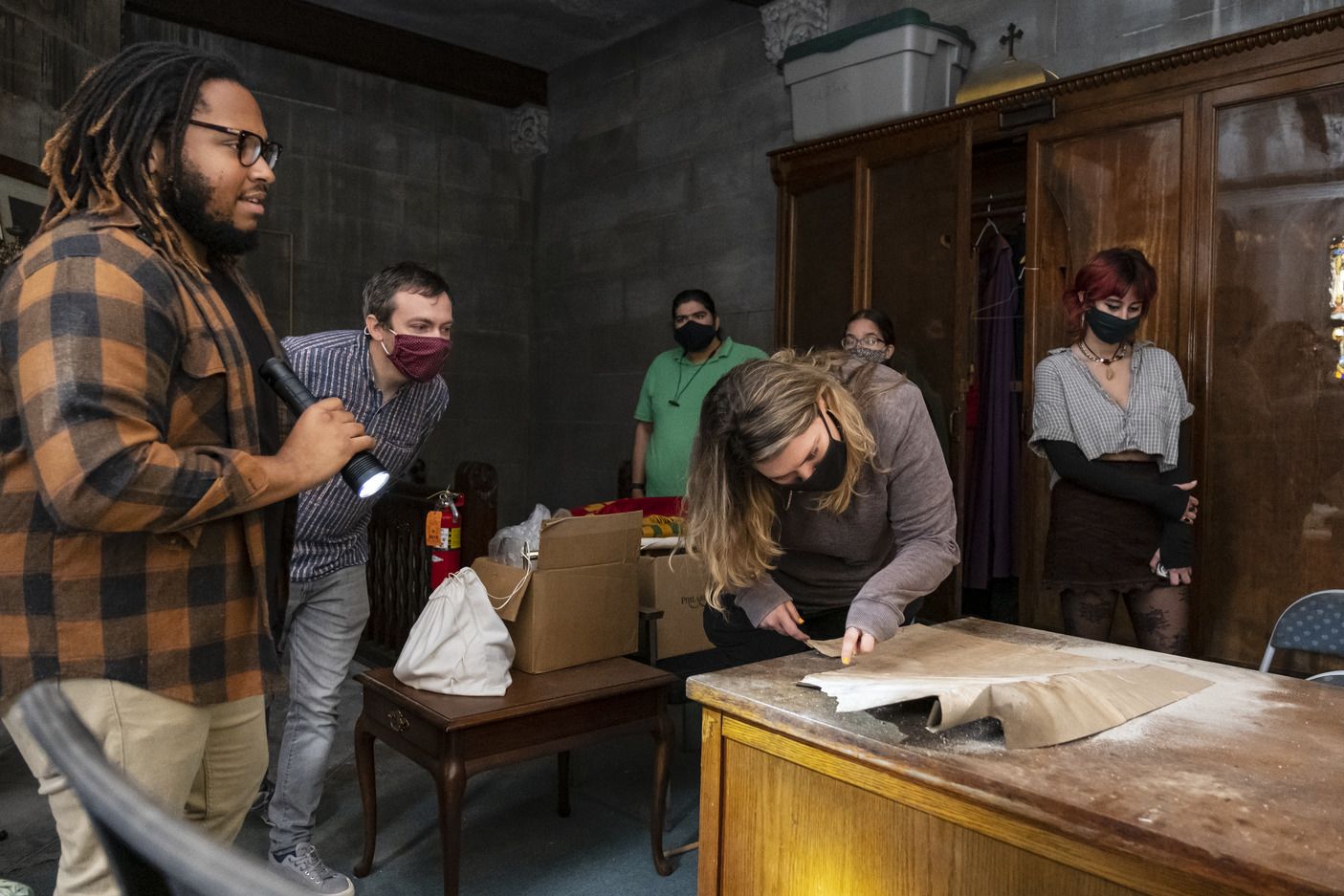
Tyler Ray (far left) leads a tour of Rev. Paul Washington's upstairs office at the Church of the Advocate. (Photo by Joseph V. Labolito)
Tyler Ray (far left) leads a tour of Rev. Paul Washington's upstairs office at the Church of the Advocate. (Photo by Joseph V. Labolito)
A basement crypt
The Church of the Advocate’s basement feels a little haunted. Its underground crypt is used as a burial place where the coffins of former church members may be found.
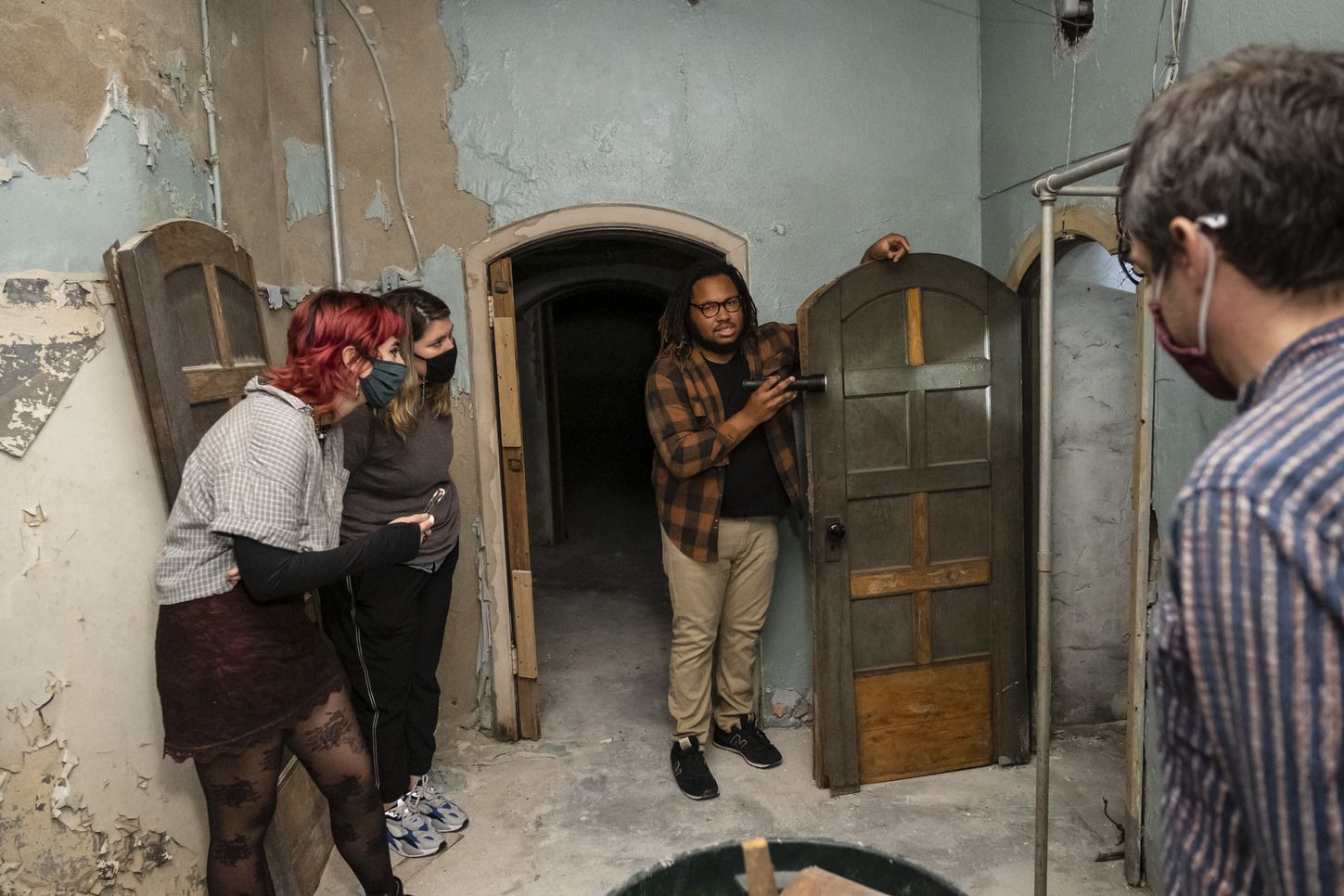
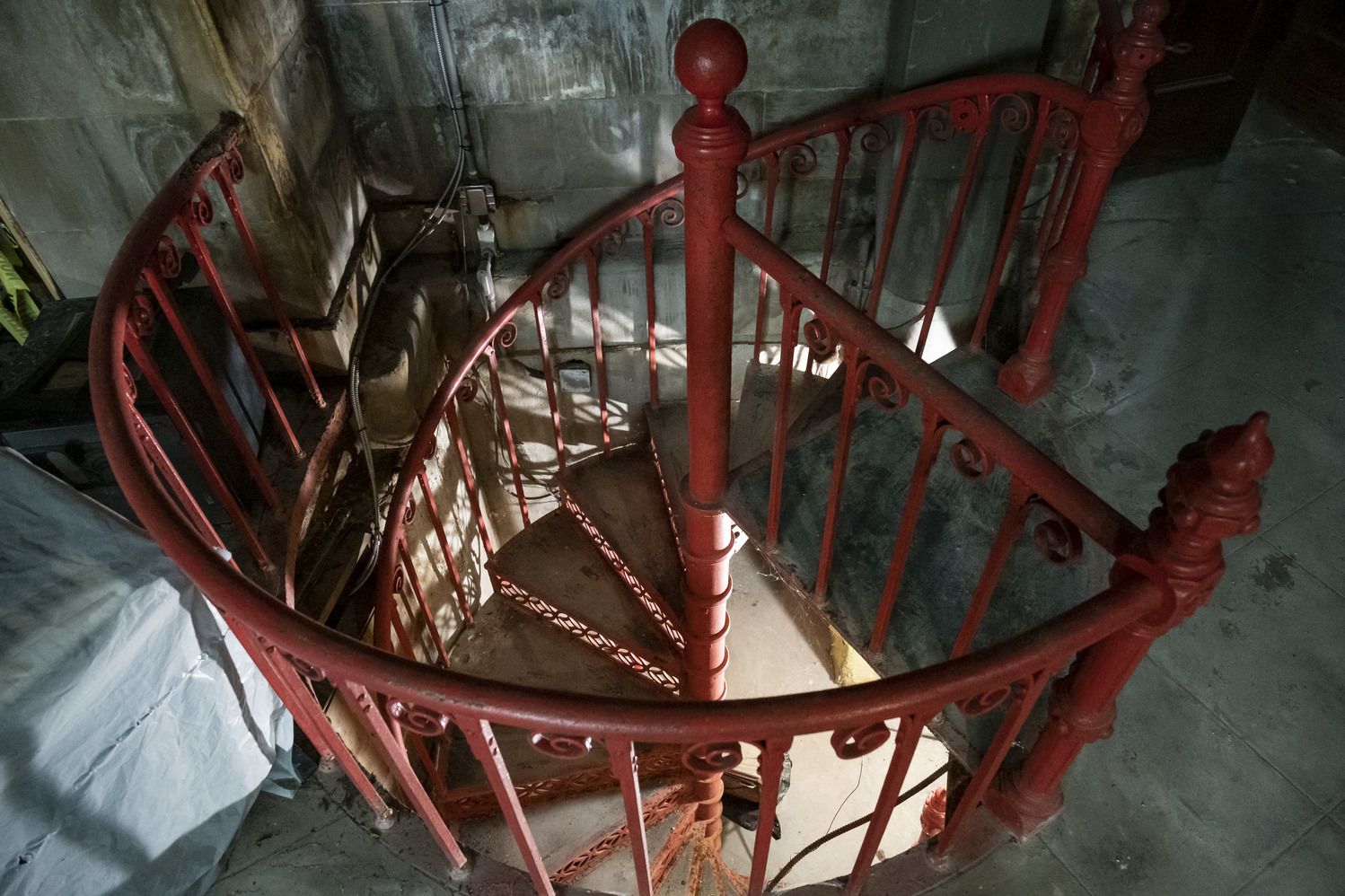
Some of the members buried there include George W. South, the namesake of the church, and Richard Y. Cook, the executor of the South estate and board chair of the construction financial committee, along with various members of their families and Wallace Sylvester, the church’s first priest.
The basement contains a device with chains attached that was used to lower each coffin into the crypt beneath the church.
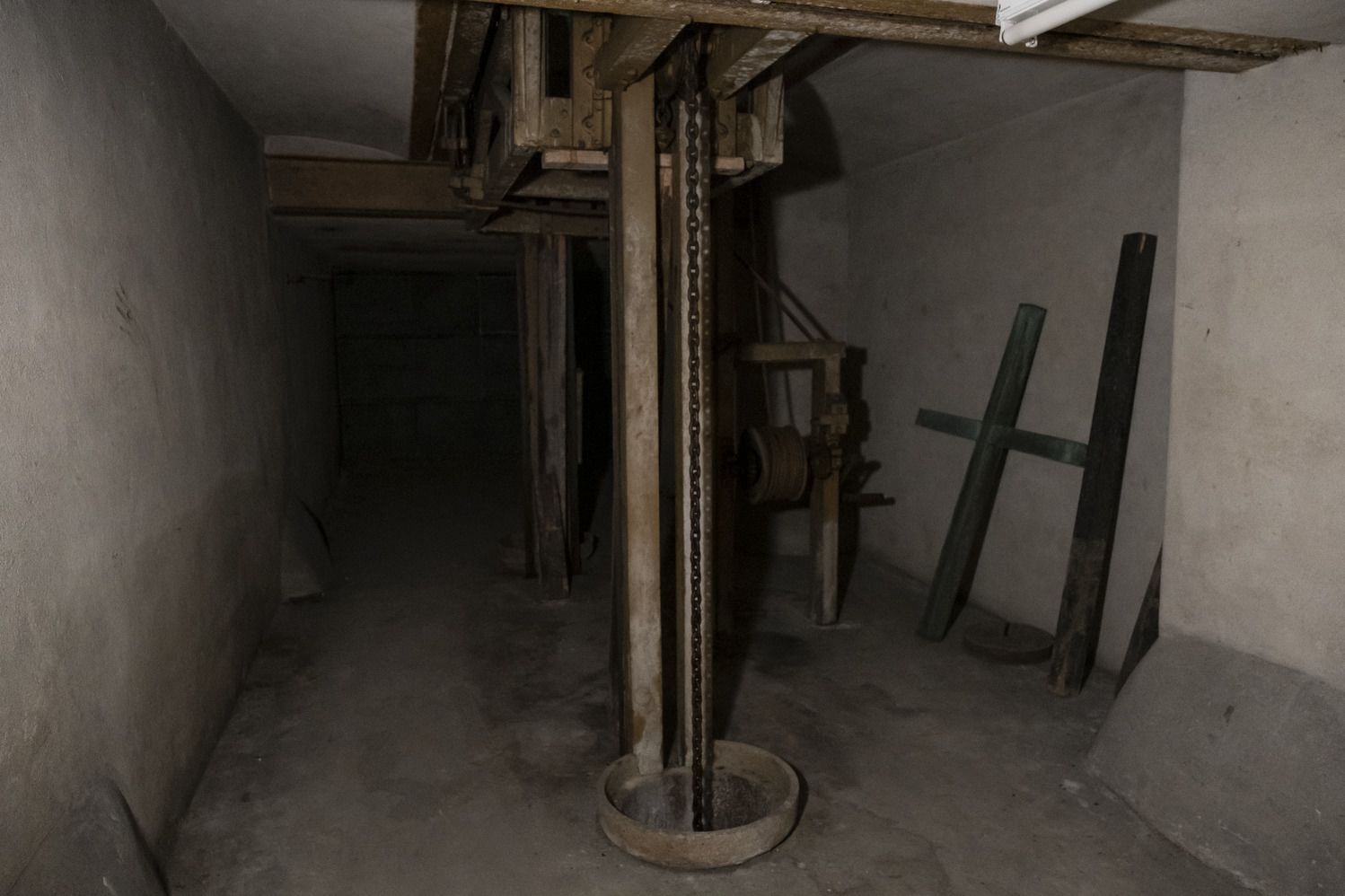
The names of those buried in the crypt are etched into the crypt’s walls. There are three or four coffins that went unmarked. (Photo by Joseph V. Labolito)
“This is where the first ordination of a woman priest at an Episcopal church happened, an international phenomenon. Malcolm X, Martin Luther King Jr. and Angela Davis were all friends with Father Paul Washington. Mumia Abu-Jamal gave a speech here, Stokely Carmichael held rallies here and John Coltrane performed a concert here from his album, A Love Supreme—the last time he ever performed that live was right here at the Advocate.” —Tyler Ray, Class of 2022
The Church of the Advocate is open for virtual and in-person religious and social service events and for free daytime tours by appointment. Masks are required.

